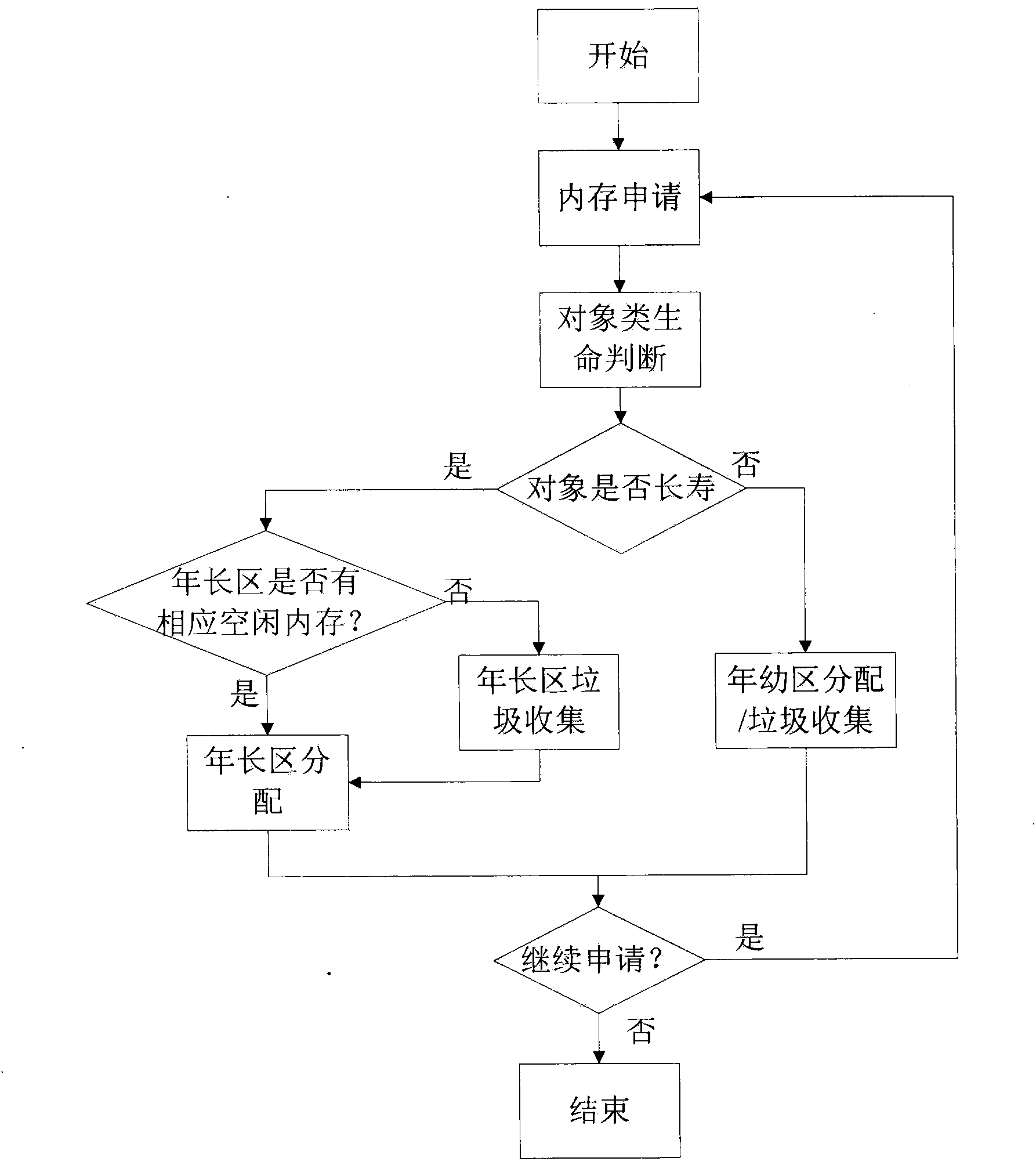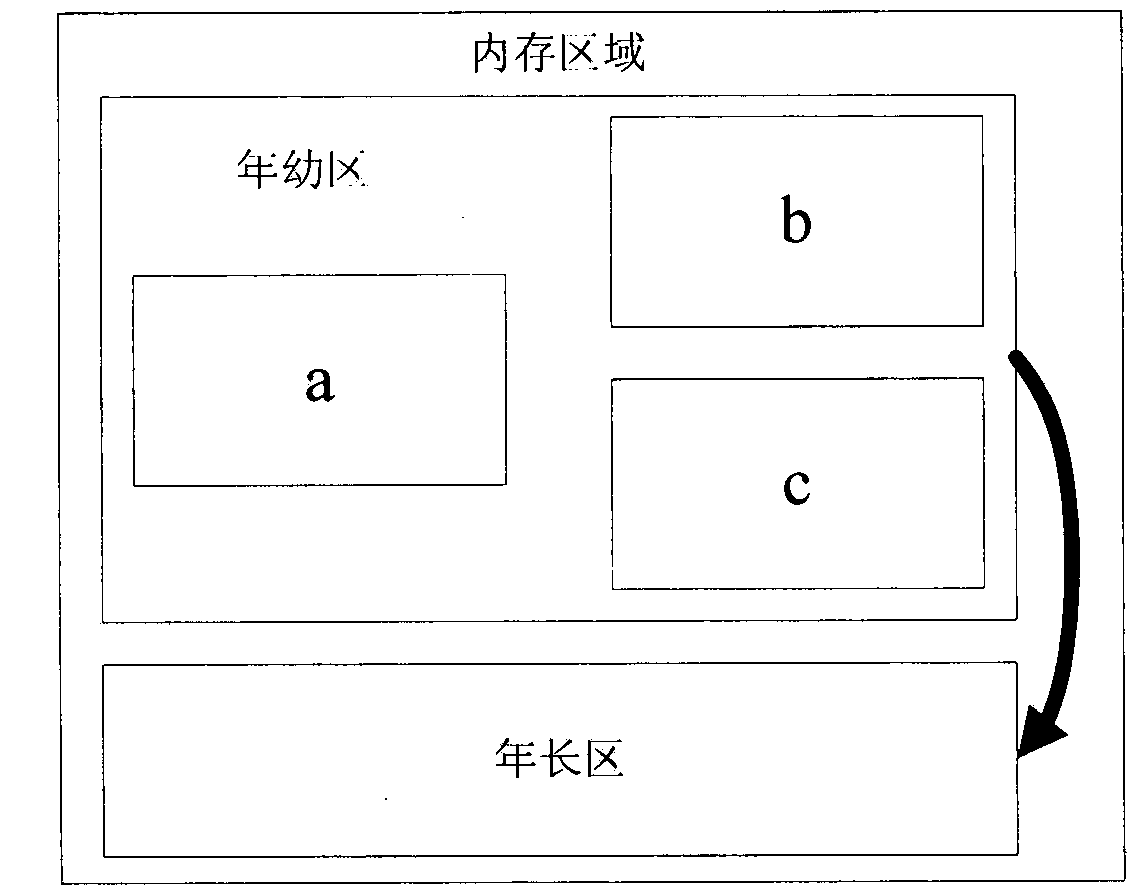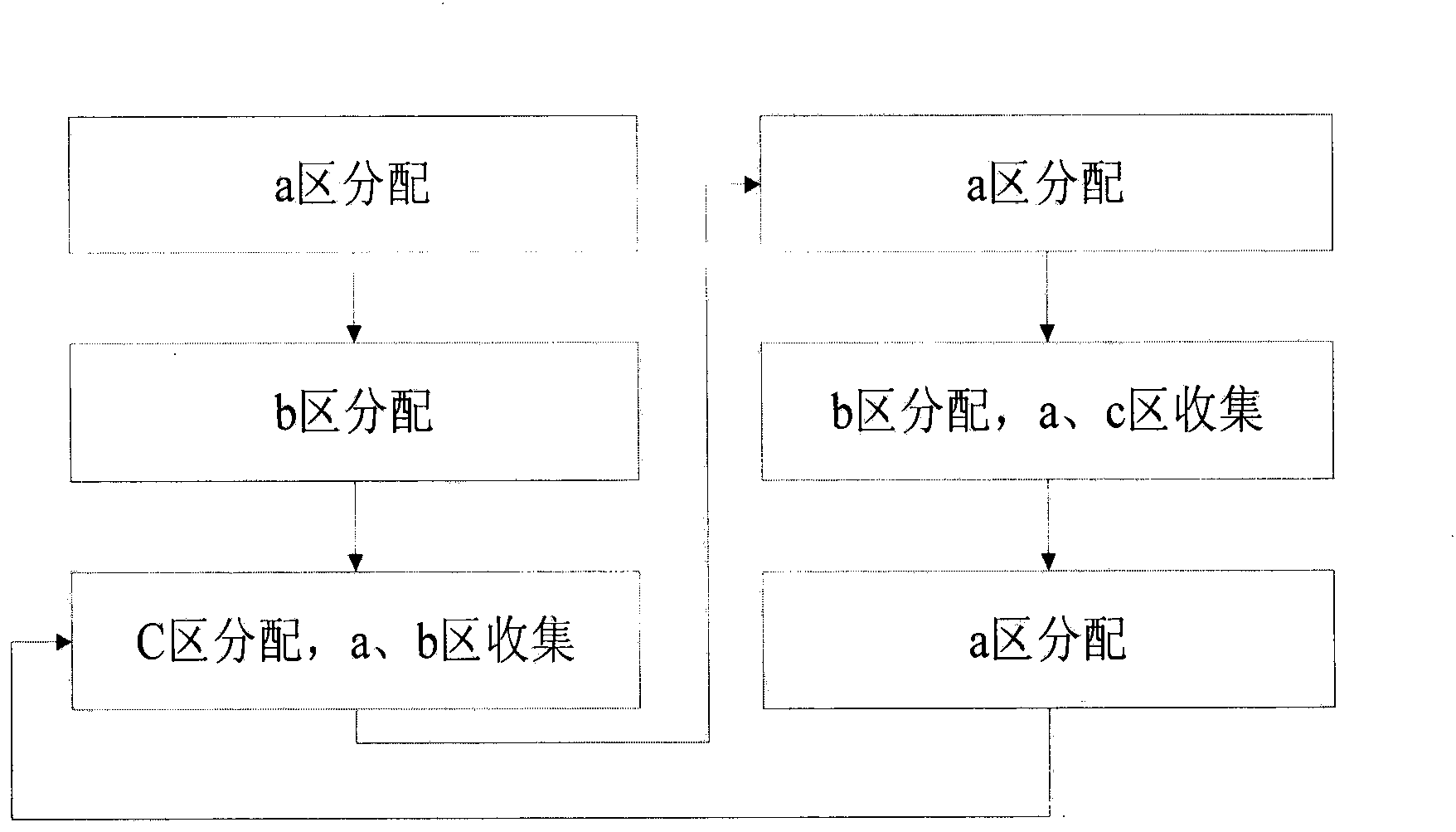Memory allocation and garbage collection method based on life-period prediction
A technology of memory allocation and garbage collection, applied in the direction of memory address/allocation/relocation, etc., to reduce the number of pauses, reduce execution time, and avoid copy operations.
- Summary
- Abstract
- Description
- Claims
- Application Information
AI Technical Summary
Problems solved by technology
Method used
Image
Examples
Embodiment Construction
[0019] In order to realize the purpose of the invention and make the technical scheme and characteristics clearer, the present invention will be further described below in conjunction with the accompanying drawings and specific embodiments:
[0020] attached figure 1 It is the memory allocation flowchart of the present invention.
[0021] Memory allocation uses a lifetime prediction mechanism to determine the allocation area. When the program applies for memory for each object, it first judges whether the class to which the object belongs is a longevity class. The criteria for judging the longevity class are as follows:
[0022] For a class C, its survival rate in the i-th garbage collection process is defined as the object survival rate r of class C in this garbage collection process i c .
[0023] r i c = m i c a ...
PUM
 Login to View More
Login to View More Abstract
Description
Claims
Application Information
 Login to View More
Login to View More - R&D
- Intellectual Property
- Life Sciences
- Materials
- Tech Scout
- Unparalleled Data Quality
- Higher Quality Content
- 60% Fewer Hallucinations
Browse by: Latest US Patents, China's latest patents, Technical Efficacy Thesaurus, Application Domain, Technology Topic, Popular Technical Reports.
© 2025 PatSnap. All rights reserved.Legal|Privacy policy|Modern Slavery Act Transparency Statement|Sitemap|About US| Contact US: help@patsnap.com



